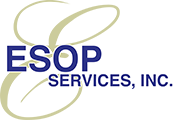The Progressive ESOP
Most executives are familiar with the conventional leveraged Employee Stock Ownership Plan (“ESOP”). A less-understood, but sometimes more powerful, vehicle capable of acquiring stock with tax deductible principal payments is the so-called “trickle-down” or “progressive” ESOP. This structure is applicable to a broad spectrum of divestitures, acquisitions and other transactions where the objective is to make tax deductible debt principal payments and minimize dilution.
The “progressive” ESOP provides an opportunity for maximizing the equity position of non-ESOP stockholders. This is accomplished while providing corporate tax deduction for some or all principal payments on the acquisition debt. It is a very flexible tax shield.
Sequence:
- The transaction is completed (acquisition, divestiture).
- The ESOP is installed prior to the end of the first fiscal year for which the tax-deductions are desired; the actual contributions need not be made until the filing of the corporate return (including extensions).
- As the loan payments on the initial transaction debt are made each year by the corporation, newly-issued stock can be contributed to the ESOP in the amount equal to the principal payment – i.e., the stock “trickles down” into the plan as the ESOP “progresses” upward each year. The value of the stock contributed to the ESOP is tax deductible to the corporation. This effectively means that the debt payment is made with pre-tax dollars. (The contribution declared annually by the board of directors can be less or greater than the principle payments on the acquisition debt.)
- If the stock value continues to rise, fewer and fewer newly-issued shares are needed each year to equal the amount of the loan payment. This results in less dilution to the existing shareholders than would be the case with the usual leveraged ESOP, which acquires all of the stock sold at the outset.
Advantages
- Greater Control: Contributions are made to the plan as needed, depending on tax and equity considerations.
- Equity Growth: The remaining shareholders’ stock value will grow proportional to corporate performance. With this structure the need for complex securities designs can often be avoided.
- Flexibility: The plan could actually be a stock bonus plan or profit sharing plan for a C corporation. Unlike an ESOP which must hold the highest class of voting shares, these plans would be permitted to receive contributions of different types of company stock, such as preferred stock with no conversion feature, or nonvoting common stock. Only voting common stock can be used for an S corporation ESOP.
- With a suitable transaction design, additional non-ESOP stock or other equity-based incentives can be made available to a management group.
- The gain in the market value of the company can more than compensate for any dilution to current stockholders, resulting in a net greater value than with the conventionally leveraged ESOP.
- No one is excluded from participating in the ESOP.
Disadvantage
- If the stock value does not grow as forecasted, the dilution to existing shareholders would be increased. However, if the value were to decrease, there would probably be less of a need for a tax deduction and the board of directors could choose to contribute less stock to the ESOP.
